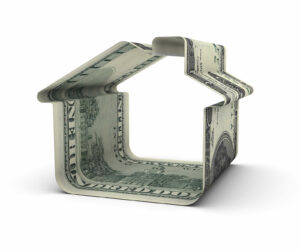How to Best Leverage Your Primary Residence

Your personal residence is one of your best assets and one of the easiest to leverage in building wealth. Your home is one of the easiest assets to lend against and can provide much-needed capital in the event of a growth opportunity.
Hear us; we are not saying to take out debt just to take out debt. But understanding the power of that equity in your home is a necessary action step as an entrepreneur and investor, especially in this incredibly low-interest-rate environment. When opportunity presents itself, the equity in your home can be a big boost in taking advantage of that opportunity.
For many clients, we offer what we call a Primary Residence Leverage Optimization Analysis. Looking at your home’s remaining debt balance, potential appraised value, and assessed value are important as you build wealth and understand your overall resources to make investments and other business and personal money decisions.
You can use that equity in so many ways. Too many people over-leverage or use the equity in ways that are less helpful – or even harmful – in the long run. As an entrepreneur, understanding how to leverage your primary residence can be a great tool for growing a business and enhancing the quality of life for your family, and ensuring long-term financial health.
Making sure this asset is optimized is important and part of our overall baseline analysis in evaluating your plan and path forward. Here are a few simple terms to make sure you understand when looking at your home’s value:
- Purchase Price – the price you initially paid for the home
- Remaining Debt Balance – the remaining mortgage after the down payment, closing costs, and mortgage payments made since purchase
- Interest Rate – if you purchased within the past 10 years, the interest rate you are paying is likely low and likely to stay low for the foreseeable future
- Home Equity – the money you would potentially earn in a sale, based on appraised value minus loan and closing costs
- Loan to Value – Current loan balance divide by Current appraised value = LTV. So, if you have a home worth $200,000 and you owe $140,000 the LTV would be 40%
- HELOC – a home equity line of credit based on the equity and LTV
- Appraised Value – the current fair market value of your home as determined by a licensed appraiser
- Assessed Value – the value of your home as determined specifically by the tax authority of your municipality
- Monthly Payment – your monthly mortgage payment, which often includes mortgage insurance if required, and property tax
- Insurance – homeowner’s insurance is a cost of homeownership that should always be factored in along with mortgage and property taxes
- Property Taxes – taxes owed based on the assessed value of your home
Most credit unions will lend up to 95% of the loan to value on a Home Equity Line of Credit (HELOC). Depending on how and when you bought the home, it may be time to look at refinancing to get the best interest rates and consolidating other debts into the mortgage to free up cash-flow.
What are the opportunities you see on the horizon? How would a carefully considered portion of a HELOC help to make that happen? We love it when that “aha” moment comes for a client and they realize that the dreams they have are within reach.
If you own a home already, that is great. You can start shopping around for the right HELOC and make a clear-headed plan to leverage this asset. And if you are looking at purchasing a new home, check out our Home Property Checklist to crunch the numbers and see what is possible in the short term for making the most of this new primary residence.